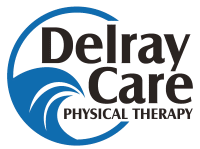Today, I’m thrilled to share insights into a revolutionary approach reshaping the landscape of pain management and recovery: Pulsed Electromagnetic Field (PEMF) therapy.
This non-invasive treatment option has been gaining traction due to its profound benefits in enhancing bodily functions and alleviating various conditions without the need for medications or surgeries.
Our aim is to demystify PEMF therapy for you—explaining its mechanisms, showcasing its versatility in treating numerous conditions, and addressing common questions to help you understand how it might specifically benefit your unique health situation.
What is PEMF Therapy?
PEMF therapy involves the emission of electromagnetic waves at various frequencies to stimulate the body’s own healing processes.
It’s based on the principle that external magnetic fields can induce minor electrical currents in your body’s cells, enhancing blood circulation and stimulating cellular repair.
This form of therapy is backed by numerous studies and has been approved by the FDA for several uses, including bone healing and pain relief.
Common Uses of PEMF Therapy
PEMF therapy is a versatile tool that can help with a broad spectrum of conditions, demonstrating significant benefits in:
- Chronic Pain Relief: From back pain to arthritis, PEMF helps reduce chronic discomfort by decreasing inflammation and increasing cellular flexibility.
- Injury Recovery: It accelerates the healing of bones and soft tissues, reducing recovery time after injuries or surgeries.
- Neurological Issues: PEMF has shown promise in improving conditions like depression and migraines by influencing electrical changes in the nervous system.
- Sleep Disorders: By normalizing the body’s electromagnetic background, PEMF therapy can improve sleep quality.
- Enhanced Circulation: It boosts blood flow, which is essential for supporting overall health and promoting healing.
Frequently Asked Questions
1. What does a PEMF therapy session feel like?
PEMF therapy is generally a comfortable experience. You may feel a gentle pulsation or a slight tingling sensation during the session.
Most people find it relaxing, and the therapy does not cause pain or discomfort.
2. How many sessions of PEMF therapy will I need?
The number of sessions required varies based on individual needs and conditions.
Some people experience relief after just a few sessions, while others may need a more extended treatment plan. Your therapist will work with you to develop a personalized plan.
3. Are there any side effects of PEMF therapy?
PEMF therapy is considered very safe with minimal side effects.
Some people might experience mild soreness or a temporary increase in symptoms as the body adjusts to the therapy, but these effects are usually short-lived.
4. Is PEMF therapy covered by insurance?
Coverage for PEMF therapy can vary depending on your insurance plan.
It’s best to check with your insurance provider to determine if PEMF therapy is covered under your plan.
5. How do I know if PEMF therapy is right for me?
PEMF therapy can be beneficial for a wide range of conditions, but the best way to determine if it’s right for you is to consult with a qualified practitioner.
At Delray Care Physical Therapy, we offer Free Discovery Visits to help you explore whether PEMF therapy is a suitable option for your needs.
Explore PEMF Therapy with a Free Discovery Visit
If you’re ready to explore the benefits of PEMF therapy, we invite you to take advantage of our Free Discovery Visit.
This is an excellent opportunity to meet our knowledgeable team, have all your questions answered about PEMF therapy, and discover how this innovative therapy can be the ultimate solution for your health concerns.
Schedule your Free Discovery Visit today by calling us at 561 562 8561 or visiting Delray Care Physical Therapy.
Don’t miss out on the chance to experience the transformative power of PEMF therapy and take control of your health and well-being. We’re here to support you every step of the way.
For More Information towards Pain Free Life
Read our Blog: Mastering Mobility: Rotator Cuff Physical Therapy Exercises
Read Or Blog: Severe Spinal Stenosis: Symptoms & Treatments
Follow us on social media to get lots more free advice, expert tips, and strategies to reduce your pain!

